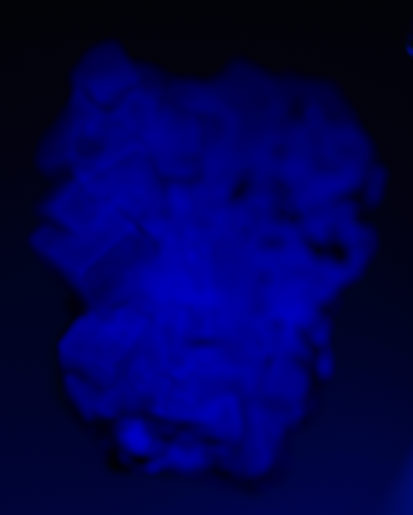- Home About RM Minerals
- Virtual Photo Museum Blog RM Contact
- Microscopy and instruments How to Buy Disclaimer
Copyright 2010-2024
www.rosellminerals.com

Group of cubic fluorite crystals with transparence and a very aesthetic yellowish-green tone. This specimen is tagged as belonging from Wales, but we have not found information on similar specimens. The piece, from the Joan Astor collection, dates from 1975 and was acquired from Sr. Montal. It is most likely an ancient specimen from the Weardale mines.
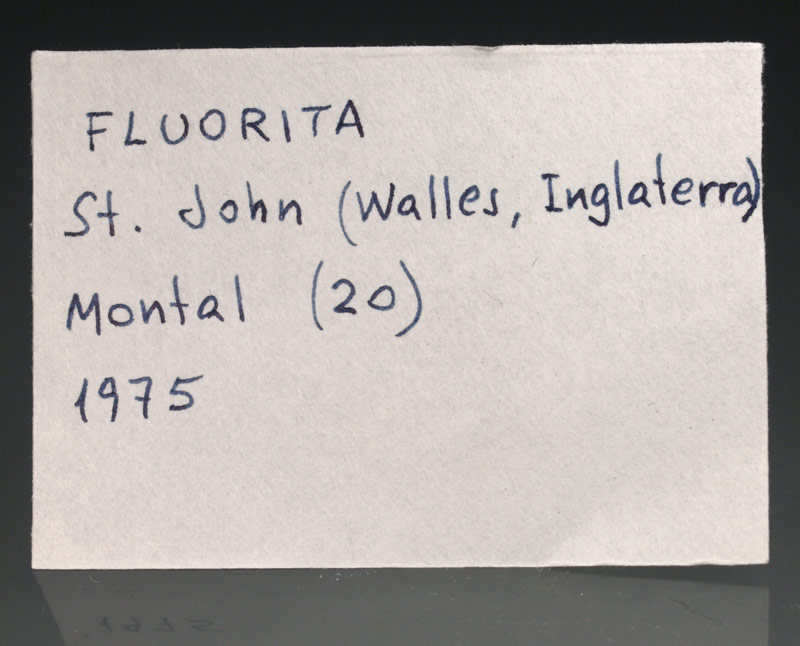
An interesting specimen of turquoise (variety rashleighite) from the Cornwall mines. Formerly, rashleighite was an approved species, now it is defined as a turquoise with a certain iron content, intermediate between chalcosiderite and turquoise. This sample shows a sky blue crust aggregates, with cavities with crystals and a quartz matrix. A Cornish classic from the collection of Joan Astor (Barcelona) and, previously, from Martín Oliete (Madrid), a well-known systematic collector.
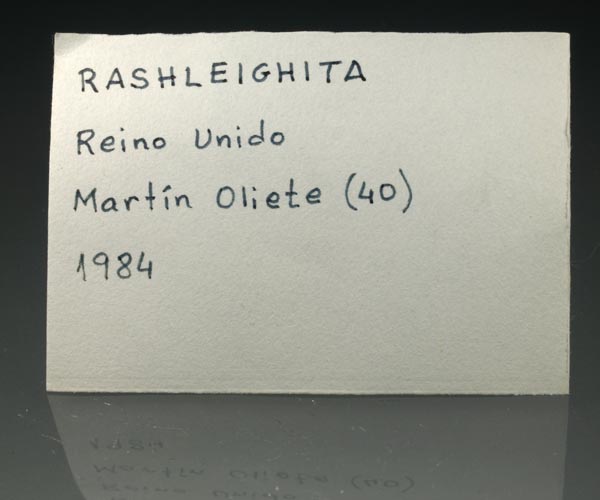
Group of fluorite crystals from this classic English mine, presents the shapes of the cube, interpenetrated and some twinned. Good transparence and very characteristic green color. This sample is photographed in some books that Joan Astor published in issuu [online pág. 34]. It was acquired in 1980 from Bailey Minerals (Ángel Jesús Talabán García, Segovia 1942-Madrid 2007). A very aesthetic piece.
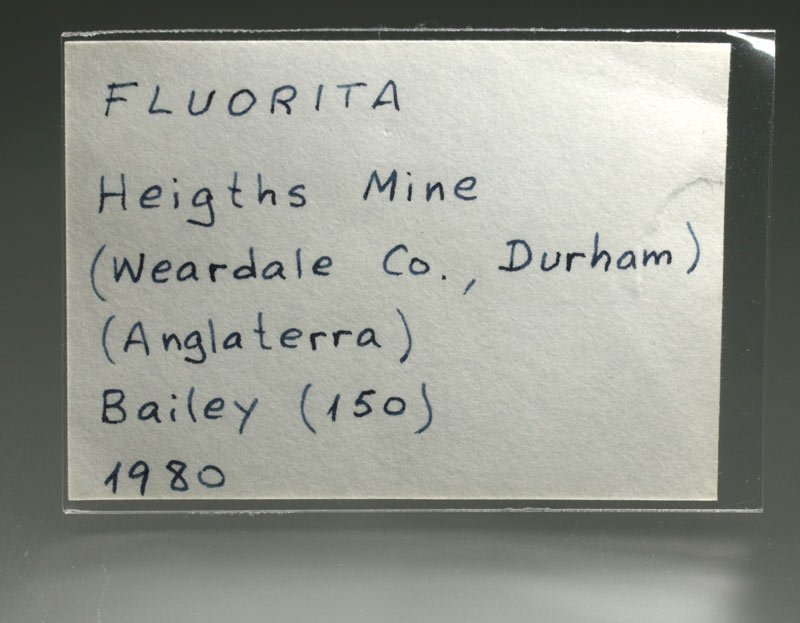
Group of volkovskite crystals in parallel growth, colorless, transparent, with inclusions of hilgardite providing a bit of red color to the edges. This specimen comes from a finding that was recovered by a worker in the mine a years ago. Volkovskite is a very rare potassium and calcium chloroborate. Specimens of this size are very rare. Undoubtedly it is the best locality. We have analyzed by SEM-EDS this sample and we will send the results to the buyer.
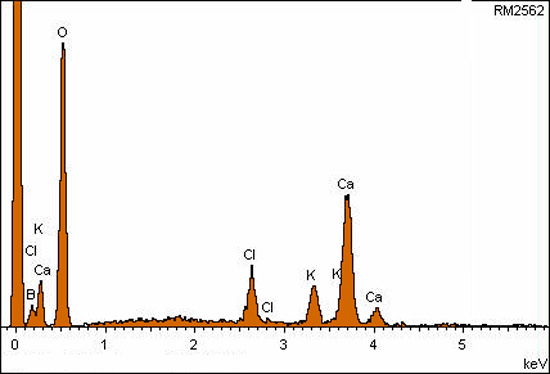
Rich group of tabular hematite crystals, very brilliant and forming very aesthetic rosettes. Pepper by small quartz crystals. They are disposed on a matrix of solid hematite. This hematite mine is located southeast of Egremont and was operated from 1903 until its closure in 1973. This aesthetic piece comes from an unidentified German collection.
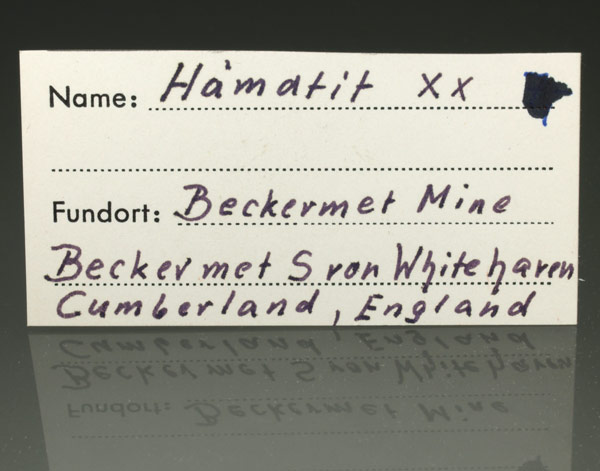
Very rich hilgardite specimen showing a reddish-colored sharp crystals. They are covering a layer of boracite crystals, as a matrix. Both boracite and hilgardite, are magnesium and calcium chloroborates respectively. This mine, which is located east of Loftus, near Easington, is worked to obtain sodium and potassium salts. When miners find veins of these borates, the rock becomes very hard, which is a problem for exploitation and a joy for collectors. This English mineral classics are not usual in the market.
Specimens of boracite from this English mine show a pale bluish tone, with complex forms of the tetrahedron, modified by the cube and the dodecahedron, and stepped growths. Between transparent to translucent. They are accompanied by colorless hexagonal tabular crystals of magnesite and aggregates of reddish-colored hilgardite crystals. Boracite shows reddish hues due to hilgardite inclusions.
Both boracite and hilgardite, are magnesium and calcium chloroborates respectively. This mine, which is located east of Loftus, near Easington, is worked to obtain sodium and potassium salts. When miners find veins of these borates, the rock becomes very hard, which is a problem for exploitation and a joy for collectors. This English mineral classics are not usual in the market.
Specimens of boracite from this English mine show a pale bluish tone, with complex forms of the tetrahedron, modified by the cube and the dodecahedron, and stepped growths. Between transparent to translucent. They are accompanied by colorless hexagonal tabular crystals of magnesite and aggregates of reddish-colored hilgardite crystals. Boracite shows reddish hues due to hilgardite inclusions.
Both boracite and hilgardite, are magnesium and calcium chloroborates respectively. This mine, which is located east of Loftus, near Easington, is worked to obtain sodium and potassium salts. When miners find veins of these borates, the rock becomes very hard, which is a problem for exploitation and a joy for collectors. This English mineral classics are not usual in the market.
Specimens of boracite from this English mine show a pale bluish tone, with complex forms of the tetrahedron, modified by the cube and the dodecahedron, and stepped growths. Between transparent to translucent. They are accompanied by colorless hexagonal tabular crystals of magnesite and aggregates of reddish-colored hilgardite crystals. Boracite shows reddish hues due to hilgardite inclusions.
Both boracite and hilgardite, are magnesium and calcium chloroborates respectively. This mine, which is located east of Loftus, near Easington, is worked to obtain sodium and potassium salts. When miners find veins of these borates, the rock becomes very hard, which is a problem for exploitation and a joy for collectors. This English mineral classics are not usual in the market.
Specimens of boracite from this English mine show a pale bluish tone, with complex forms of the tetrahedron, modified by the cube and the dodecahedron, and stepped growths. Between transparent to translucent. They are accompanied by colorless hexagonal tabular crystals of magnesite and aggregates of reddish-colored hilgardite crystals. Boracite shows reddish hues due to hilgardite inclusions.
Both boracite and hilgardite, are magnesium and calcium chloroborates respectively. This mine, which is located east of Loftus, near Easington, is worked to obtain sodium and potassium salts. When miners find veins of these borates, the rock becomes very hard, which is a problem for exploitation and a joy for collectors. This English mineral classics are not usual in the market.
This English specimen shows us a group of calcite crystals, one of them of larger size, interpenetrated, twinned, with a color between honey to white. With defined faces and edges, translucent. In the back it shows a exfoliated part. A sample from a mine not well represented in collections. From the Adrian collection, a dealer and collector from the United Kingdom. Label will be send with specimen.
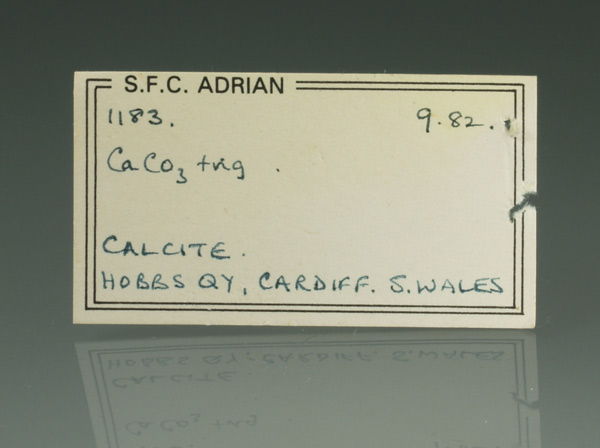
The Greenlaws mine is located in Weardale, in the northern Pennines of England, south of the small town of Daddry Shield. Around we find famous mines such as Rogerly, Boltsburn or Heights... This Greenlaws mine was worked for the galena between 1840 and 1901, being one of the most important lead mines in the area. In 2009 a group of collectors started the "Greenlaws mining project". After almost 5 years digging out the vertical shaft over 80 meters (270 ft) appeared the first specimens of fluorite, ending 2013.
This specimens we propose has been extracted from vugs found in a new connecting tunnel at 270 ft, between main shaft to a second contiguous adit. Good brilliance, transparence, with geometric color zoning that varies between purple to blue according to the incident light. With defined faces and edges and these characteristic whitish internal structures. Extremely fluorescent.
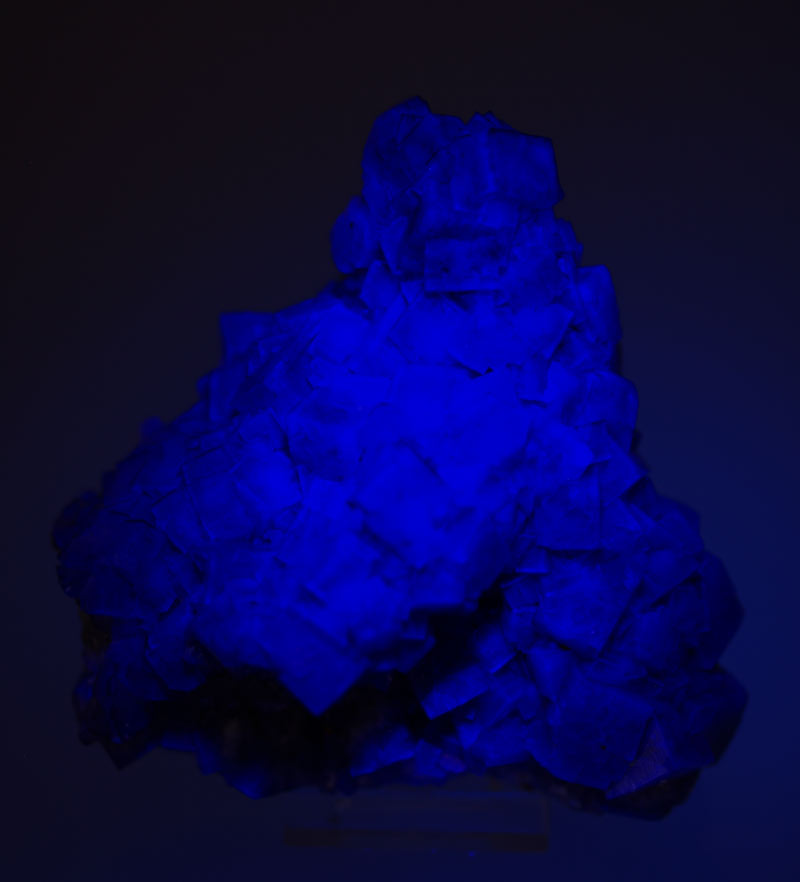
This specimen was worked from the area known as Great Limestone Flats. Crystals of good size, brightness, with intense geometric color zoning, that varies from purple to blue according to incident light. With defined faces and edges and these characteristic whitish internal structures. Accompanied by samll siderite crystals and galena. Extremely fluorescent.
The Greenlaws mine is located in Weardale, in the northern Pennines of England, south of the small town of Daddry Shield. Around we find famous mines such as Rogerly, Boltsburn or Heights... This Greenlaws mine was worked for the galena between 1840 and 1901, being one of the most important lead mines in the area. In 2009 a group of collectors started the "Greenlaws mining project". After almost 5 years digging out the vertical shaft over 80 meters (270 ft) appeared the first specimens of fluorite, ending 2013.
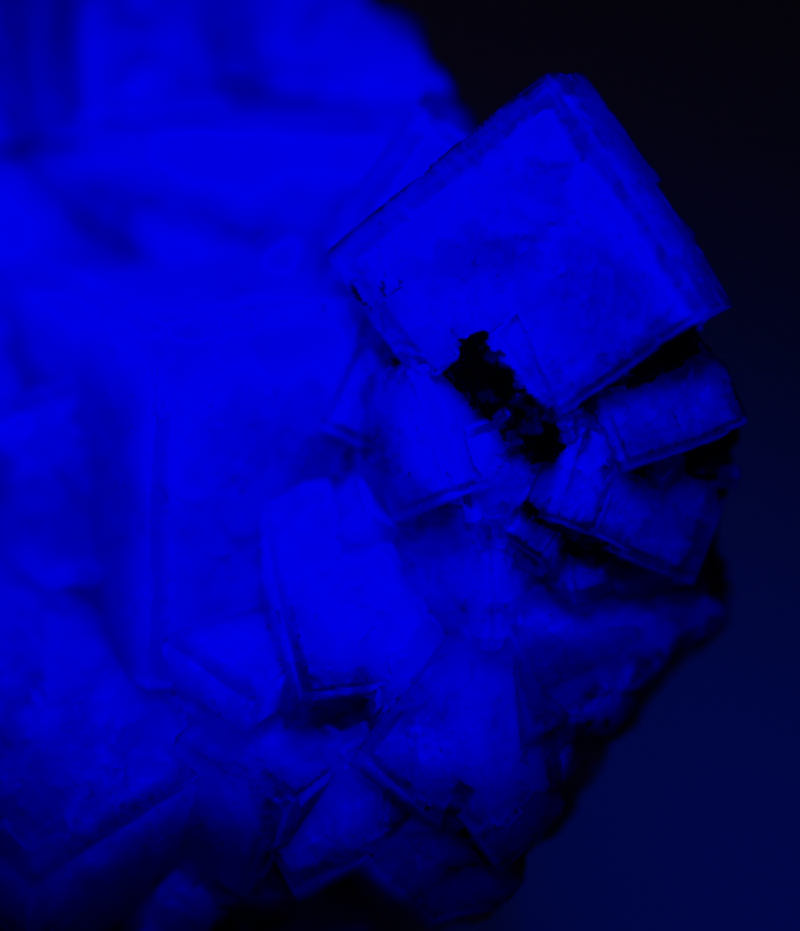
The Greenlaws mine is located in Weardale, in the northern Pennines of England, south of the small town of Daddry Shield. Around we find famous mines such as Rogerly, Boltsburn or Heights... This Greenlaws mine was worked for the galena between 1840 and 1901, being one of the most important lead mines in the area. In 2009 a group of collectors started the "Greenlaws mining project". After almost 5 years digging out the vertical shaft over 80 meters (270 ft) appeared the first specimens of fluorite, ending 2013.
This specimens we propose has been extracted from vugs found in a new connecting tunnel at 270 ft, between main shaft to a second contiguous adit. Good brilliance, transparence, with geometric color zoning that varies between purple to blue according to the incident light. With defined faces and edges and these characteristic whitish internal structures. Extremely fluorescent.
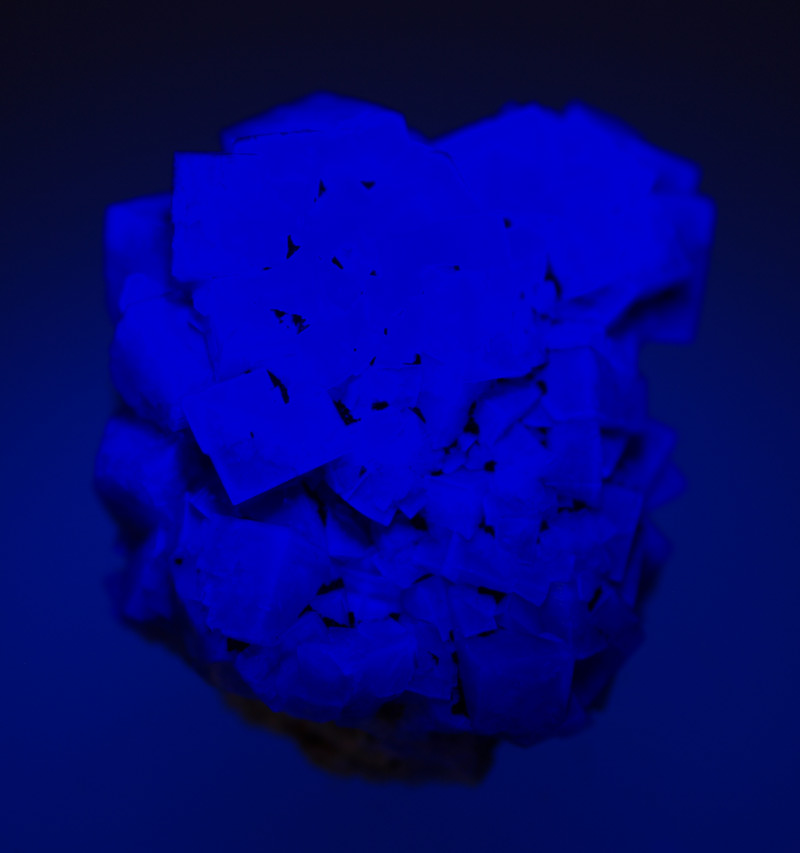
The Greenlaws mine is located in Weardale, in the northern Pennines of England, south of the small town of Daddry Shield. Around we find famous mines such as Rogerly, Boltsburn or Heights... This Greenlaws mine was worked for the galena between 1840 and 1901, being one of the most important lead mines in the area. In 2009 a group of collectors started the "Greenlaws mining project". After almost 5 years digging out the vertical shaft over 80 meters (270 ft) appeared the first specimens of fluorite, ending 2013.
This specimens we propose has been extracted from vugs found in a new connecting tunnel at 270 ft, between main shaft to a second contiguous adit. Good brilliance, transparence, with geometric color zoning that varies between purple to blue according to the incident light. With defined faces and edges and these characteristic whitish internal structures. Extremely fluorescent.
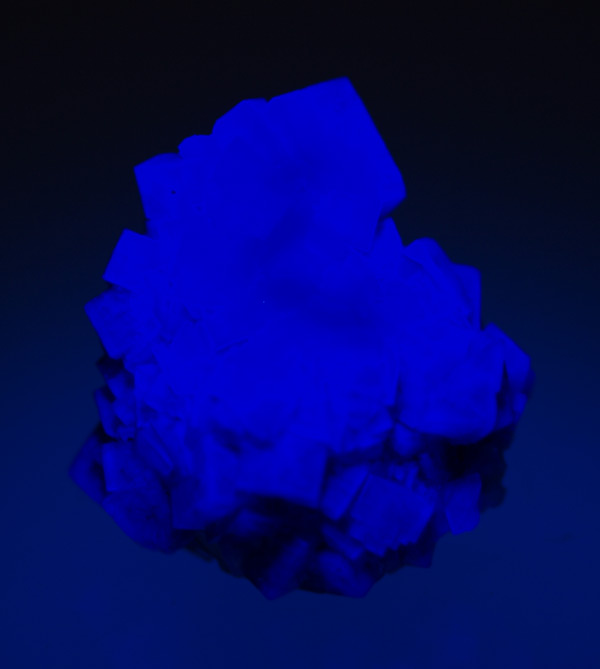
The Greenlaws mine is located in Weardale, in the northern Pennines of England, south of the small town of Daddry Shield. Around we find famous mines such as Rogerly, Boltsburn or Heights... This Greenlaws mine was worked for the galena between 1840 and 1901, being one of the most important lead mines in the area. In 2009 a group of collectors started the "Greenlaws mining project". After almost 5 years digging out the vertical shaft over 80 meters (270 ft) appeared the first specimens of fluorite, ending 2013.
This specimens we propose has been extracted from vugs found in a new connecting tunnel at 270 ft, between main shaft to a second contiguous adit. Good brilliance, transparence, with geometric color zoning that varies between purple to blue according to the incident light. With defined faces and edges and these characteristic whitish internal structures. Extremely fluorescent.
